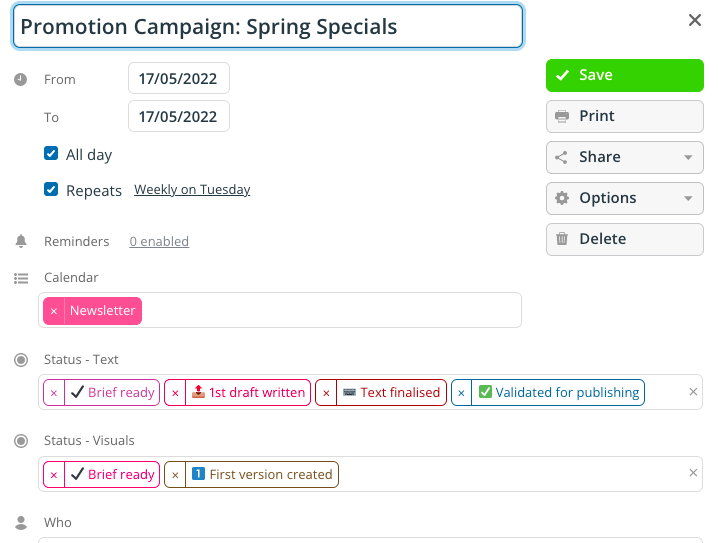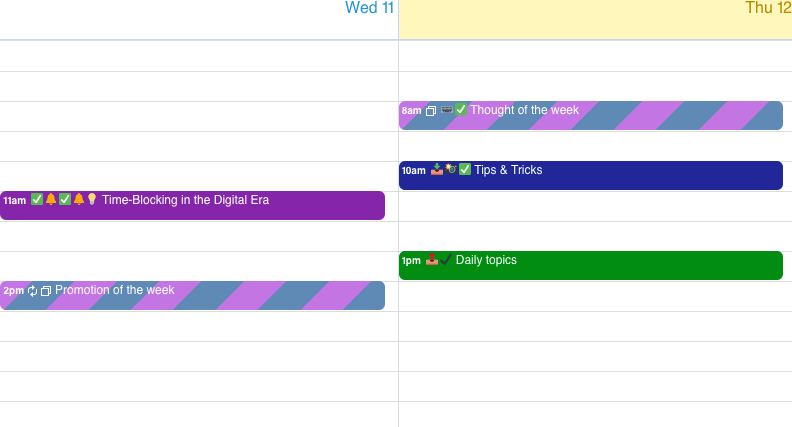Last updated Sep 20, 2022
Email is error-prone and ineffective as a way to manage creative teams. Fortunately, it’s not your only option. Here’s how to reduce email hassle and transition to a smooth and productive creative workflow in five simple steps.
Email is anti-productivity
How are your creative teams collaborating?
The default solution for many teams is email. Briefs and comments fly back and forth via email. Drafts are stored in folders that drift towards chaos as the project progresses. Details get lost in email threads, and getting the right information to the right person–quickly–is difficult.
It’s frustrating and inefficient for team members, who deal with an average of 122 business emails a day. Studies show that email increases stress, reduces productivity, and reduces job satisfaction.
In the worst-case scenario, mistakes occur and the quality of final work declines.
What if there was a better way?
Step 1: Map out your creative process
Don’t jettison email overnight. Take time to build up a replacement system first. Start by mapping out all the steps in the team’s creative process, such as planning and executing a marketing campaign or coordinating a company blog.
With email, different stages of the creative process often happen simultaneously as all participants react to what’s happening ad hoc. You’ll have to take time to sort out which step should happen first. Ask your team some of the following questions:
- Where does the process start?
- Which steps are always or almost always included?
- Where are the dependencies?
- Who are the key people involved in the process?
- What kind of information do they need to do their work well?
- Whose validation is needed and when?
The answers help give structure to the creativity. The result isn’t stifling; it will help you set up a fluid communication and project management system for your creative team. Clarity with these questions not only helps reduce email hassle, it also frees your team to do more satisfying work.
Step 2: Set up a replacement system
Once the steps are more or less clear, it’s time to set up a replacement system for the daily email ping-pong. Teamup lends itself well to editorial calendars and campaign planning, among other things.
At this point, the clearer the answers in Step 1, the easier set-up will be. Translate project stages and milestones, for example, into custom event fields for easy follow-up and trackable changes.
Ensure that these questions are answered:
- How are briefs shared and stored?
- Which are the key milestones of each project?
- Who is in charge of each step?
- How do team members communicate with each other when questions and comments arise?

Step 3: Make it a team habit
Now that the system is ready to go, give it a test run and get the whole team involved.
This is often the hardest part of the process. If the team doesn’t see and feel the benefits, they risk falling back into what they do know: email. Not because it’s a better system, but because they know it and it feels comfortable.
In the early stages, make these steps a habit for everyone as you reduce email hassle with a better system:
- Share briefs through the selected platform
- Share status updates by the platform instead email or instant messaging
- Ask questions and share comments via the platform
- Check the status of the project on the platform before sending email inquiries
With updates accessible via the shared project platform, everyone stays aware and organized. Instead of sending an email, team members can see changes on the calendar, update status, share files, and keep notes all in one place. It’s an easier, much more efficient way to manage a creative team even across multiple locations and time zones.
If you use emojis with custom event fields, updates and changes become instantly visible – and they also add a level of playfulness to the project!

Step 4: Store and retrieve content quickly
A centralized creative process helps achieve fluid and mistake-free projects, and increases the ease of storing and retrieving information both during the project and post-completion.
That’s why it’s worth organizing all the different pieces of a project, such as a social media campaign, where the whole process is managed. Teams will see the benefits when they can quickly find what they need for current work, as well as review and even duplicate elements used in previous projects. Instead of reinventing the wheel, or spending hours browsing chaotic folders, they’ll just retrieve all the information and content elements from where they’re stored, and easy to find, on the calendar.
Step 5: Adjust as your team and projects evolve
As with every change, setting up a shared campaign and content planning tool requires some time and iterations. Involve team members in evaluating and improving the system gradually.
In the beginning, this can be a monthly review meeting. Encourage the team to record spontaneous remarks and feedback along the way, and set aside a monthly time for a more formal discussion. As the system gets more refined, a quarterly check-in can be sufficient.
Over time, as the email burden diminishes, and the creative process flows more easily, the whole team will appreciate the mental space that’s cleared up for creativity, productivity and enjoyment of work. Create your own Teamup calendar today and get started, or try out a live demo.

